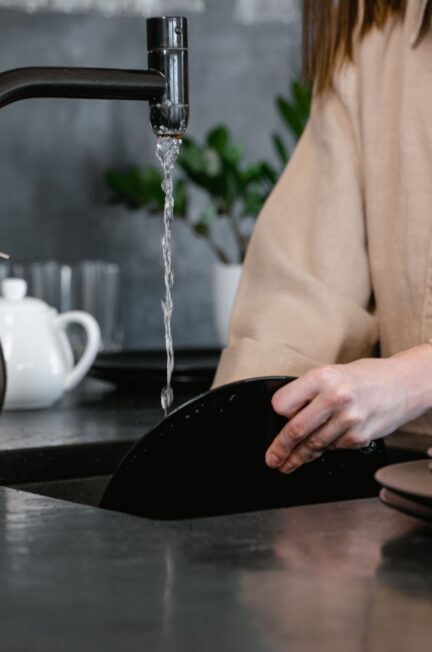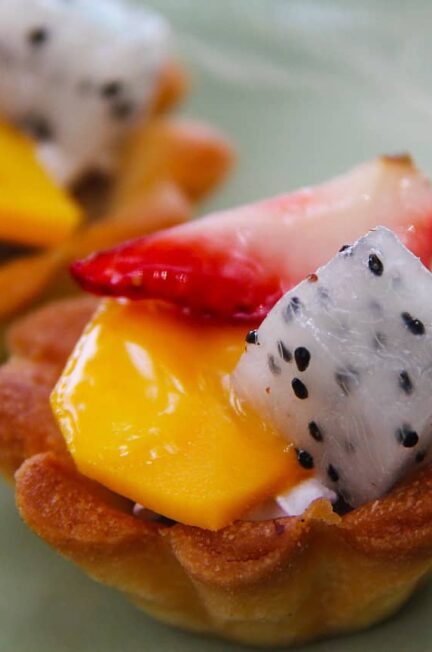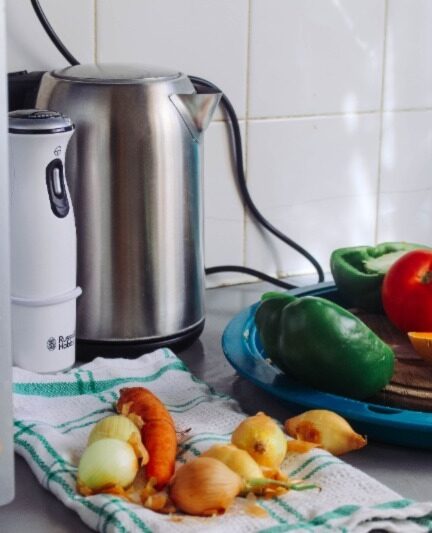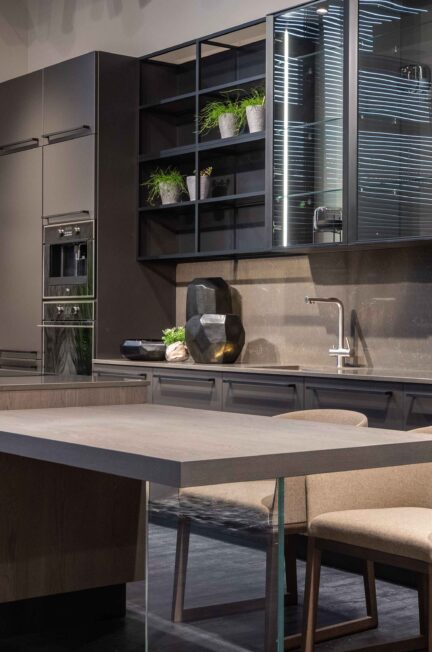Have you ever tried to remove sticky residue from your kitchen appliances, only to find that it’s a stubborn and frustrating task? Whether it’s from spilled food, sticky labels, or unknown substances, sticky residue can be a real headache to deal with. But fear not, because I’m here to share some effective methods for removing sticky residue from your kitchen appliances.
With just a few simple household ingredients and a little bit of elbow grease, you’ll be able to restore your appliances to their original shine and get rid of that sticky mess. So say goodbye to sticky residue and hello to a spotless kitchen!
How To Remove Sticky Residue From Kitchen Appliances?
In this blog, I’ll walk you through step-by-step instructions on how to remove sticky residue from your kitchen appliances, and I’ll also provide some tips and tricks to make the process even easier. Whether you’re dealing with sticky residue on your fridge, oven, microwave, or any other kitchen appliance, these methods will help you tackle the problem and leave your appliances looking brand new.
Gather Necessary Cleaning Supplies
Having all of the appropriate cleaning supplies on hand is critical for properly removing sticky residue from kitchen equipment while preserving its integrity. Here is a list of cleaning essentials:
- Dish soap: A mild dish soap acts as a general cleaning agent, breaking down oil and dirt on appliance surfaces.
- Warm Water: Warm water is a versatile solvent that assists in the dissolution of sticky residue and the loosening of dirt.
- White vinegar: Because of its acidic properties, vinegar is an effective natural cleanser for removing difficult stains and sticky residues.
- Baking soda: This soft abrasive is great for removing debris without scratching sensitive equipment surfaces.
- Microfiber cloths: Because they are soft and lint-free, microfiber cloths are great for delicate yet efficient cleaning that does not leave streaks or lint behind.
It is impossible to stress the value of utilising non-abrasive materials. Abrasive cleaning equipment, such as steel wool or rough sponges, can quickly harm delicate surfaces on kitchen appliances, such as stainless steel, glass, or plastic. Scratches and markings generated by abrasive materials not only detract from the aesthetic of the appliance but also create areas where dirt and grime may gather more easily, resulting in more intractable sticky residues. To protect the lifespan and finish of the appliance, use soft cloths or microfiber towels and avoid hard scrubbing. Furthermore, testing cleaning solutions on a tiny, inconspicuous area beforehand ensures that they will not do any damage.
1. Cleaning With Dish Soap And Warm Water
Cleaning with dish soap and warm water is an effective and safe method to tackle sticky residue on kitchen appliances. Follow these step-by-step instructions for the best results:
- Prepare The Cleaning Solution: Add a few drops of mild dishwashing liquid or soap to a bucket or basin of warm water. Gently stir until the soap is dissolved. To avoid excessive suds, avoid using too much soap.
- Unplug The Appliance: Before cleaning, unplug the equipment to avoid any electrical dangers.
- Dampen a Microfiber Cloth: Dip a microfiber cloth or a soft sponge into the soapy water to dampen it. To avoid leaking, wring away any extra water.
- Apply The Solution: Using a wet cloth, gently clean the afflicted regions of the appliance. Assist in fully moistening the sticky residue with the soapy solution.
- Let it Settle: Allow the cleaning solution to remain on for a few minutes on the residue. This helps to lessen the stickiness and make removal simpler.
- Gently Scrub: Using gentle pressure, gently scrub the sticky areas with a moist towel. Excessive force or abrasive materials that might harm the appliance’s surface should be avoided.
- Wipe Clean: After scrubbing, thoroughly rinse the cloth with clean water and wipe away the soapy residue from the device.
- Dry the Appliance: Wipe it clean with a dry microfiber towel to eliminate any lingering moisture.
Following these methods should free your kitchen appliances from the sticky residue, restoring their cleanliness and functioning.
2. Use White Vinegar For Stubborn Residue
White vinegar is a powerful natural degreaser and residue remover, making it a great choice for removing stubborn sticky residue from kitchen equipment. Its acidic characteristics aid in the breakdown of oil and dirt, making it simpler to remove without damaging the appliance’s surface.
Here’s how to use white vinegar to get rid of tough residue:
- Dilute the Vinegar: To make a cleaning solution, combine equal parts white vinegar and water in a spray container. This dilution guarantees that the vinegar’s acidity is effective without being too harsh on the appliance’s surface.
- Apply the Solution: Spray the white vinegar solution straight onto the sticky regions of the appliance to apply it. Make sure the residue is well covered with the solution.
- Let it Sit: Allow for 5 to 10 minutes for the vinegar solution to rest on the residue. During this time, the vinegar breaks away the stickiness and filth, making it simpler to clean.
- After letting it rest, gently scrub the sticky areas with a soft cloth or sponge. The acidity of the vinegar will aid to loosen the residue, making it simpler to wash away.
- Wipe Clean: Rinse the cloth with clean water and wipe the vinegar solution and sticky residue off the appliance.
- Dry the Appliance: Wipe it clean with a dry microfiber towel to eliminate any lingering moisture.
Because of its natural cleaning strength, white vinegar is an eco-friendly and cost-effective solution for dealing with persistent sticky residue, leaving your kitchen equipment clean and revitalized.
3. Try Baking Soda Paste for Tough Stains
When it comes to cleaning difficult and persistent stains on kitchen equipment, a baking soda paste can perform wonderfully to efficiently break down and remove the sticky residue. Baking soda is a gentle abrasive that aids in the removal of filth without scratching or harming the appliance surfaces.
To prepare and use a baking soda paste, follow these steps:
- To make the paste, combine baking soda and a few drops of water in a small dish to make a thick, spreadable paste. The texture should be similar to toothpaste.
- Apply The Paste: Apply the baking soda paste directly to the sticky regions of the appliance using a clean finger or a soft cloth. Make sure the paste completely covers the residue.
- Allow the baking soda paste to settle for 10 to 15 minutes on the sticky residue. This allows the baking soda to penetrate the residue and perform its magic.
- After a while, gently scrub the sticky areas in circular movements with a soft cloth or a non-abrasive sponge. The abrasiveness of baking soda will assist remove the residue without causing any damage.
- Wipe the appliance clean by rinsing the cloth with clean water and wiping away the baking soda residue and sticky gunk.
- Dry the appliance: Wipe it clean with a dry microfiber towel to eliminate any lingering moisture.
Baking soda paste is an excellent and safe way to remove difficult stains and sticky residue from kitchen appliances, leaving them clean and gleaming like new.
4. Use Microfiber Cloths for Gentle Cleaning
Microfiber towels are your greatest buddies when it comes to cleaning kitchen equipment and dealing with sticky residue. These specialized cloths are made to capture dirt and grime, making them extremely effective in removing sticky residues while leaving no lint or scratches behind.
Here are some reasons why you should use microfiber towels for cleaning:
- Non-abrasive: Because microfiber cloths are soft and smooth, they are safe to use on a variety of appliance surfaces. They will not scratch or harm sensitive finishes like stainless steel, glass, or plastic, unlike abrasive sponges or brushes.
- Cleaning effectiveness: Microfiber cloths’ fine fibres have a great ability to absorb oil and grime, offering a comprehensive cleaning experience.
- Lint-free: Because microfiber cloths are lint-free, they will not leave irritating fibres or particles on your appliances after cleaning.
To minimise potential damage to your kitchen gadgets, avoid using abrasive sponges or brushes. These abrasive compounds not only scratch surfaces but also contribute to the collection of further filth and grime in the future. Using microfiber cloths offers a perfect and scratch-free clean, keeping your appliances looking and performing at their best.

Test On A Small Area First
Before cleaning the complete appliance, it is critical to first test any cleaning solution or procedure on a tiny and unnoticeable region. This precautionary procedure allows you to verify compatibility with the surface material of the appliance and avoid any harm. Apply the cleaning solution or procedure to the test area and wait a few minutes to see how it works. If there are no negative responses, such as discolouration or damage, you can proceed with cleaning the rest of the appliance with confidence. Testing on a limited area initially provides peace of mind and aids in the preservation of the appliance’s look and operation.
Conclusion
To summarise, removing sticky residue from kitchen equipment needs the use of safe and tested cleaning procedures. Starting with a mild dish soap and warm water combination, gently scrubbing with a microfiber cloth can remove most residues. White vinegar or a baking soda paste can be incredibly effective natural remedies for persistent stains. However, try any cleaning solution on a tiny area first to guarantee that it will not harm the appliance’s surface.
Avoid using abrasive items like sponges or brushes, which can produce scratches, and instead use microfiber cloths for lint-free and scratch-free cleaning. You can keep your kitchen equipment clean and attractive by using these procedures and safety measures.
Keeping your kitchen equipment clean and residue-free not only assures maximum function but also improves the overall hygiene and aesthetics of your kitchen environment. Happy cleaning!



